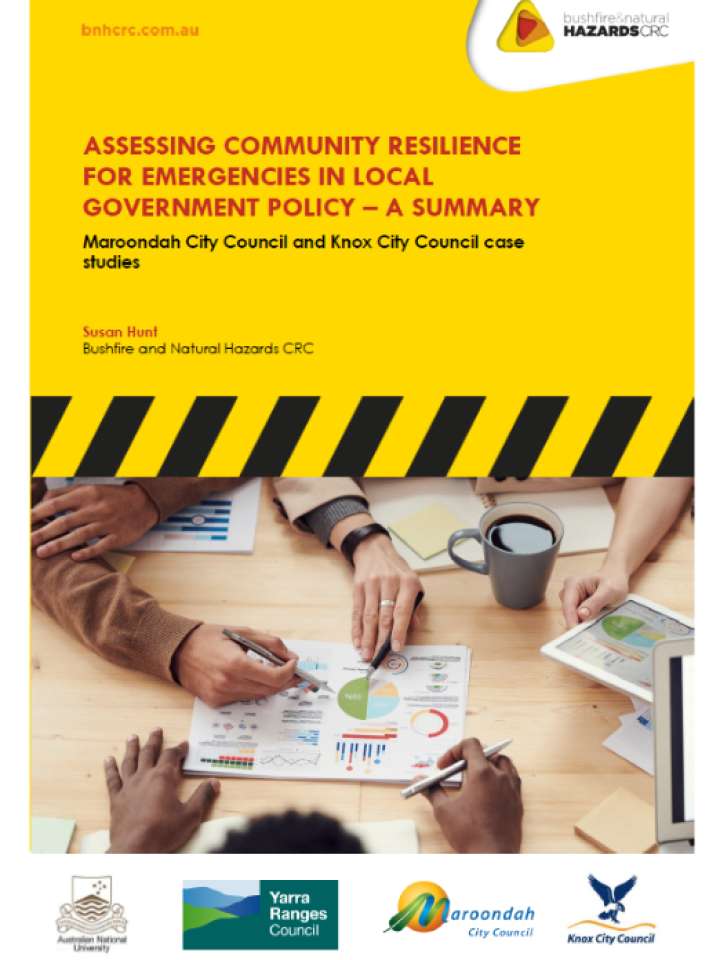Assessing community resilience for emergencies in local government policy: summary
This study aims to evaluate policies by the Maroondah City Council and the Knox City Council to see where and how they align with and incorporate resilience. The Assessing community resilience for emergencies in local government policy (ACRE) project also highlighted some strategic issues that are potentially relevant for local government and disaster resilience policy more broadly. All levels of the Australian Government adopted the National Strategy for Disaster Resilience in 2011 (NSDR) and its implementation is ongoing. The NSDR aims to shift national policy away from the traditional focus on disaster response toward planning and prevention to reduce the risk of natural disasters and the severity of their consequences. The National Disaster Risk Reduction Framework was launched in 2020 and builds on the NSDR and references resilience.
The study indicates that it is critical that council programs and activities are designed and implemented in accordance with evidence about how to achieve resilience. The study finds that Maroondah and Knox City Council policies have a generally high level of adherence to resilience principles. Both councils’ climate change policies stand out in that they reflect a wide range of resilience characteristics. However, compared with their climate change policies, councils’ emergency management plans are narrowly focused in terms of their alignment with resilience. There are gaps in both Maroondah and Knox policies in the areas of volunteering and business continuity planning. There is also a lack of research on diversity and participation of potentially vulnerable groups. Finally, the top-down approach taken by the Community Resilience Framework for Emergency Management (EMV Framework) manifests in an under representation of key elements of resilience as per the resilience research literature.
Explore further
